This article covers the standard enablement plan that we use with our customers to help them democratize data and increase the data literacy of their business users.
Org Admins
| Project Leaders
| Champions
|
This article provides a plan for Org Admins, Project Leaders, and Champions of Auto Insights to be successful in their role and implementation of Auto Insights for their organization.
Data Democratization
| Increase Data Literacy
| Speed to Insights
|
What are the strategic goals set out for your organization to accomplish in the next 1, 3, and 5 years? Ideally, there is to be an alignment between your organization's goals with at least one of the 3 north star pillars above.
Aligning this upfront will help to define what we call an AAI Success Plan. An AAI Success Plan is an established agreement between key stakeholders that are providing value and those who are gaining value from the usage of AAI with a timeline and key activities to be completed.
If your organization has a dedicated CSM, has available enablement hours, or is willing to invest in enablement hours, we recommend using those hours and Alteryx resources for Auto Insights enablement. If neither of those applies to your organization, we do provide resources for self-service enablement as well.
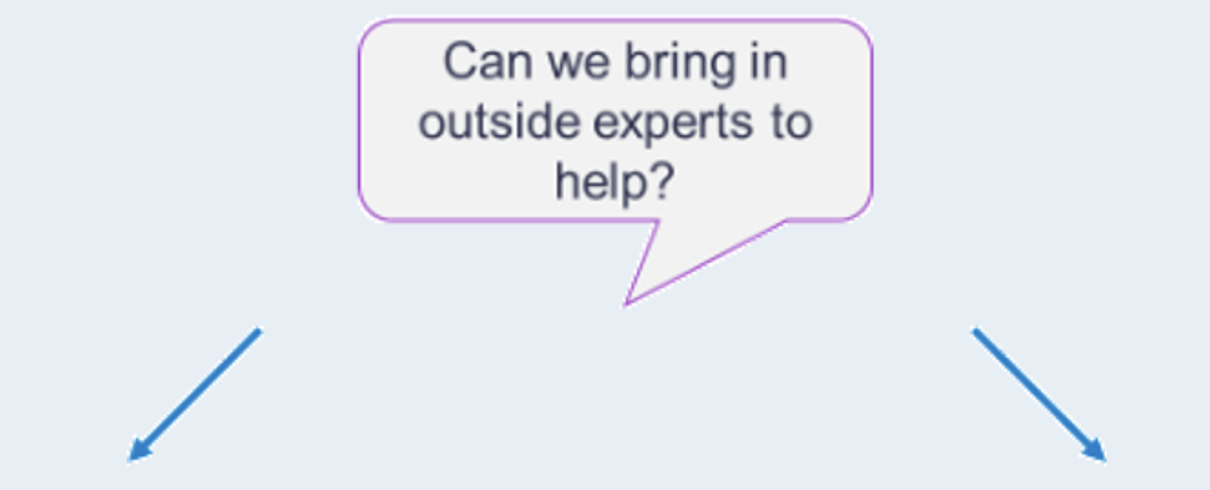 | |||
Yes | No | ||
Tap into your enablement hours to deliver enablement throughout your organization. Alteryx or one of our Auto Insights certified partners will be able to design your AAI Success Plan and drive the enablement for you and your organization. Reach out to your Alteryx Account Manager to discuss your available hours and find the right partner for you! | This guide and the following resources are available for you to deliver your enablement. Together with your Org Admins, Project Leaders, and Champions pull together an AAI Success Plan and execute it to enable your organization. | ||
To get you started on your AAI journey, we recommend that you design a success plan suitable for your organization and where you are currently in your data analytics journey.
Below shows the continuous lifecycle where there are 2 distinct starting points:
You have identified a suitable use case during your pre-sales cycle with a high ROI that can deliver value quickly.
OR
You have purchased AAI as part of an ELA bundle and the use case identified during pre-sales was suitable for evaluation, but not necessarily for continuous business usage.
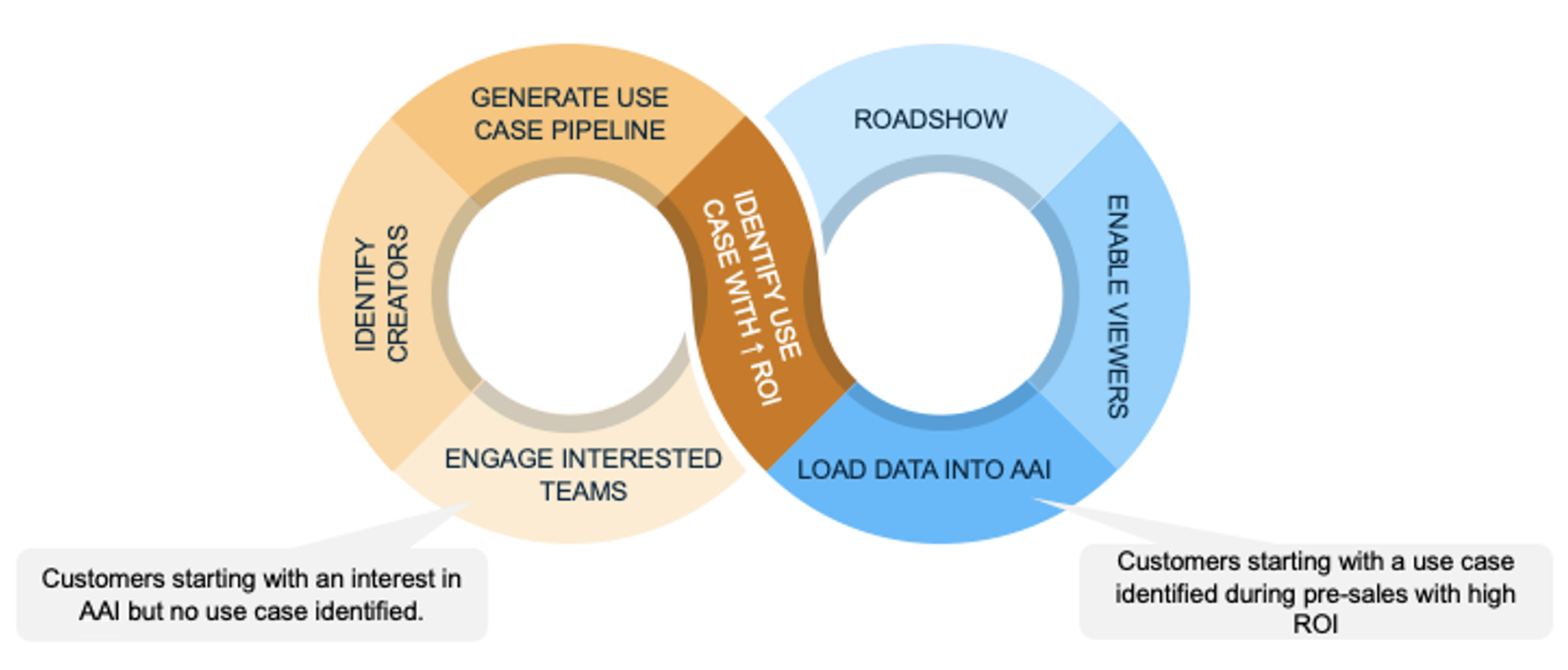
Regardless of which is your starting point, you will cover all the necessary stages needed to ensure ROI is achieved with AAI within your first year of purchase.
With your purchase of Auto Insights, you will receive a select number of Creator as well as Viewer licenses. The main difference between these roles(license) types is that Creators will be able to upload data into Auto Insights.
Within these roles, there may be different personas of users, and based on their persona, they may have very different goals and very different experiences with the tool. The following information will help you understand which of your team maps to each role and persona.
License Type | Persona | Description | Assigned User Roles |
|---|---|---|---|
Creator | Alteryx User / Analyst | Prepares workflows and data assets for upload. Able to understand and configure datasets for business use. Creates Mission templates for end users. | Organizational Admin 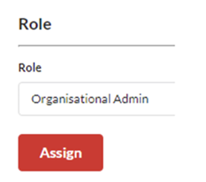 or Administrator 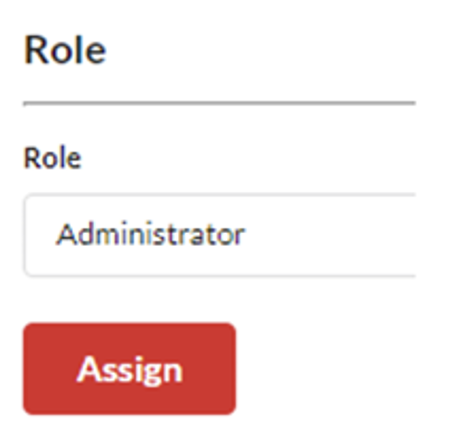 |
Viewer | Champion Viewers | Business users who are in the know of their data. Because these users are more data literate and close to business problems, they are more hands-on with the tool. They work closely with Creators to create value-adding Missions templates and can speak to the insights easily to the rest of the business. | User  |
LOB Insight Receivers | These users are typically part of the broader business stakeholder group and typically receive insights via email summaries of Missions that are built for them – either by Creators or Champion Viewers. | ||
Executives | Similar to LOB Insight Receivers, this group receives insights mostly via email summaries of Missions that are curated specifically for their questions and drill-downs. Executives also have the added responsibility of encouraging the adoption and success of Auto Insights throughout their teams by driving usage. |
Click here for more information on roles and permissions.
It may seem daunting at the start when there are a lot of users to activate and enable. By focusing on the Creators and Champion Viewers, you can create a strong foundation of AAI to spread throughout your organization.

Focus on your Creators and train them on how to qualify use cases, prepare data & build Missions in Auto Insights
Involve Champion viewers early in the process as they are best suited to guide your Creators on designing value-adding Mission templates for the rest of the Viewers to leverage and use.
Champion Viewers and Creators are the appropriate groups to gain buy-in and provide ongoing support to their business teams.
As viewers start to get on-boarded and the tool is being embedded into their processes, It’s time to share success upwards with Executives on the progress your team has made.
With executive awareness, other teams might come on board as well which repeats the cycle of identifying a new group of creators and focusing on them.
Below is an example of a series of sessions that encompasses a success plan. Details of each session are covered in subsequent sections of this article.
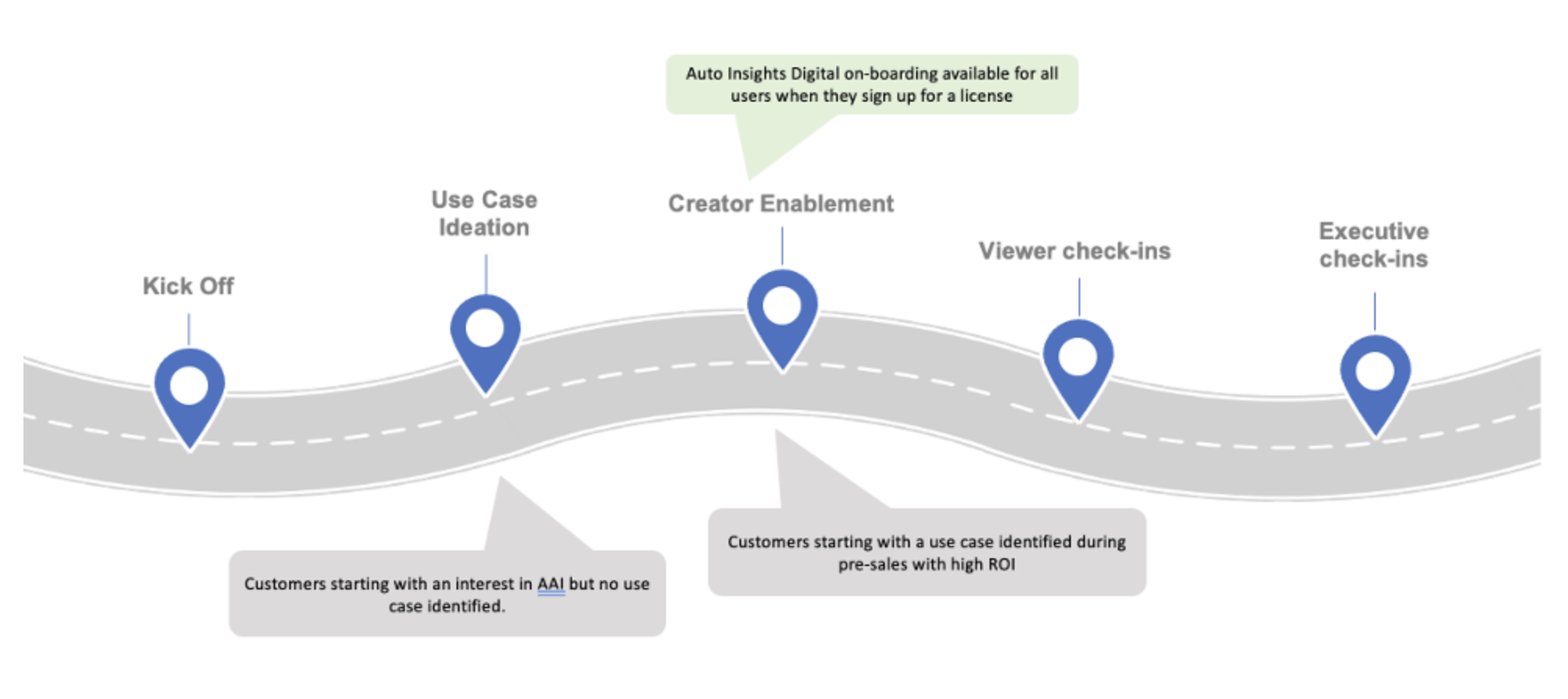
Now that we understand what the enablement lifecycle looks like for our successful customers, below are the sessions that you can leverage to complete each stage of the lifecycle.
Audience: Auto Insights Org AdminAnalyst Champion(s), Business User Champion(s), Budget Holder, Project Leader (if any)
Pre-Requisite: Key stakeholders understand Auto Insights Value Proposition
Objective: Align strategy (start with scoping or enablement) + Identify creator group
Outcome: Set defined timelines for sessions and identified creator and viewer cohort for enablement.
IDENTIFY THE RIGHT STRATEGY—Based on how AAI is introduced to the team, you would either start with the scoping path or the enablement path. Typical questions to ask your stakeholders:
What does success look like for you concerning Auto Insights?
Is there an MVP use case with a target group to start with?
IDENTIFY YOUR CREATOR/CHAMPION VIEWER COHORTThe recommended way of identifying your creator cohort is to understand if there are existing challenges faced by teams that align with AAI’s Value Proposition. Typical questions to ask:
Is there any team that has a KPI on improving data democratization of data products/assets across the business?
Is there any team that supports the business in their monthly strategic meetings with curated insights?
Is there any team that is currently managing business ad-hoc requests and creating reports/ad-hoc visualizations that are used only once?
IDENTIFY USE CASES—>A good way of understanding what works is to leverage our community content...
[Blog post] What makes a good use case
[Help Article] List of AAI Use Cases
The scoping path can be homework before the use case ideation session is conducted.
Audience: Creators, Champion Viewers, Budget Holders (optional but strongly recommended)
Pre-requisite: Kick-off done, No use case identified
Objective: Generate a pipeline of use cases and select the one with the highest ROI.
Outcomes: Multiple datasets were designed and loaded into AAI. Creators understand what works well with AAI to identify suitable use cases in the future.
Understand Use Case Eco-System

Understand What Works in AAI
There are slight differences when designing a data asset/product for dashboard use vs designing it for automated insights.
[Digital On-boarding] Auto Insights Onboarding 3: Getting your hands dirty for Creators
[Help Article] Data Preparation
IDEATION APPROACH
Dashboard backlog mapping—Map dashboard requests to use cases that are suitable for Auto Insights based on Use Case Ecosystem.
Hackathon/Competition—Incentivize Creators to design data assets based on your existing business problems.
Our recommendation post this session is for Creators to start loading data assets that are designed for Auto Insights and start exploring before the Creator enablement session.
Audience: Creators, Champion Viewers
Pre-requisites: Dataset uploaded into Auto Insights + Auto Insights digital onboarding completed (for Creators)
Objective: Ensure a path to productize AAI and create Mission templates for the Viewer cohort
Outcome: Creators are comfortable productizing data
EXPECTED VIEWER EXPERIENCE
Start with broadcast—To easily introduce AAI to the Viewer cohort, soft launch the product via Mission subscription (read here for more information) for all to receive updated insights.
Identify viewers that require ad-hoc exploration—To ramp up data literacy and get your Viewer cohort to self-serve, provide them with check-in sessions to cover any questions.
AUTO INSIGHTS CONFIGURATION
Ensure Viewer cohort profiles are created in Auto Insights.
Create Groups and assign datasets.
Audience: Viewer cohort
Pre-requisites: Mission subscription has been set up and Viewers have received their first mission summary email + Auto Insights digital onboarding completed (for viewers).
Objective: Ensure Viewer cohorts are comfortable with self-service.
Outcome: Successful rollout of your use case + value realized by Viewer cohorts.
These sessions are driven by the needs of your viewer cohort.
By now, you should have a group of creators who have learned to upload data and create missions for the viewer cohort, and at least one business team on-boarded with AAI. The objective of this session is to recap the progress of the team, as well as identify new areas where you can expand the AAI footprint within your organization.
One of the best ways to gain further executive buy-in is to share success stories from your viewer group where they have gotten value by using AAI.
You’ve reached the end of the best practices for productionizing your first use case!
Create your plan with the sessions covered earlier with a timeline to be shared with your stakeholders.
For every user of Auto Insights, we have a digital onboarding process where we will cover details on features and functionality in detail (in bite-size videos). It would be good to keep this top of mind for new users to go through this automated onboarding process to reduce continuous training requirements by you/your team.
Good luck and all the best with productionizing your first use case!





